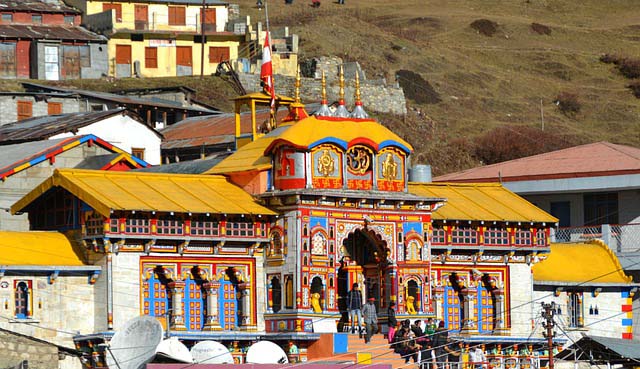Badrinath Temple 2024 | Badrinath Dham Yatra 2024 | Badrinath Yatra 2024 | History of Badrinath | Badrinath Temple Travel Guide 2024 | History | Timings
Badrinath Temple
Situated in Chamoli district of Uttarakhand state in India, Badrinath Temple is one of the most prominent Hindu religious pilgrimage sites dedicated to Lord Vishnu, situated near the banks of the Alaknanda River flowing in the Himalayas.
You can estimate the faith of the devotees towards Badrinath from the fact that in the year 2012, during the 06 months, 10.6 lakh devotees had darshan of Lord Badrinath. The Badrinath temple dedicated to Lord Vishnu is also a part of the most sacred Chardham Yatra in Hinduism.
Apart from this, the Badrinath temple is also a part of Chhota Chardham Yatra (Kedarnath, Badrinath, Gangotri and Yamunotri) performed in Uttarakhand. Apart from the Badrinath temple, Dwarka, Jagannathpuri and Rameshwaram are also revered as Chardham.
For these Chardham temples, every Hindu living in India and the world must visit Chardham once in his life. For Badrinath, it is said in the Puranas that every person should visit Badrinath at least 02 times in his life. The time of construction of the Badrinath temple is believed to be around the 7th and 9th centuries.
The height of the Badrinath temple is only 3133 meters (10279 feet) above sea level. The small town situated around the temple is also known as Badrinath. Like the Panch Kedar temples, the Badrinath temple is also open for the devotees to visit for only six months in a year.
Being situated at a high altitude, the Badrinath temple and the surrounding area receives very heavy snowfall during the winter season and the temperature drops to several degrees minus. Because of this, the doors of the Badrinath temple remain closed for the devotees from November to May.
After that, as soon as the summer starts, at that time from April or May to November, the Badrinath temple remains open for the devotees to visit. During the winter season, the “Utsava Murti” of Lord Vishnu from Badrinath Temple is installed at Narasimha Temple located in Joshimath and for the next 06 months, the “Utsava Murti” of Lord Vishnu is worshipped in this temple.
Lord Vishnu is worshipped as “Badri Narayan” in the Badrinath temple. Devotees of Lord Vishnu also like to call Badrinath by the name of “Badri Vishal”. In the sanctum sanctorum of the temple, about 01 meters (3.29 ft) high Shaligram stone idol of Lord Badrinath was established by Adi Shankaracharya by removing it from Naradkund located near the temple in the 8th century.
The followers of the Hindu religion believe that the idol installed in the Badrinath temple is one of the eight self-manifested idols of Lord Vishnu. The chief priests of the Badrinath temple are Brahmins of the Namboodiri sect of the state of Kerala in South India and they are called “Ravals” here.
Badrinath temple is also mentioned in many ancient texts of Hinduism (Mahabharata, Skanda Purana and Vishnu Purana). The glory of Badrinath is also described in the Nalayar Divya Prabandha composed by the Alvar saints before the 8th century.
Like the Panchkedar temples, there are 06 other temples of Badrinath also known as Yogdhyana Badri, Bhavishya Badri, Adi Badri, Vriddha Badri, Shri Dhyan Badri and Shri Nrsingh Badri. These seven temples of Lord Vishnu are known as Sapta Badri.
Name of Badrinath
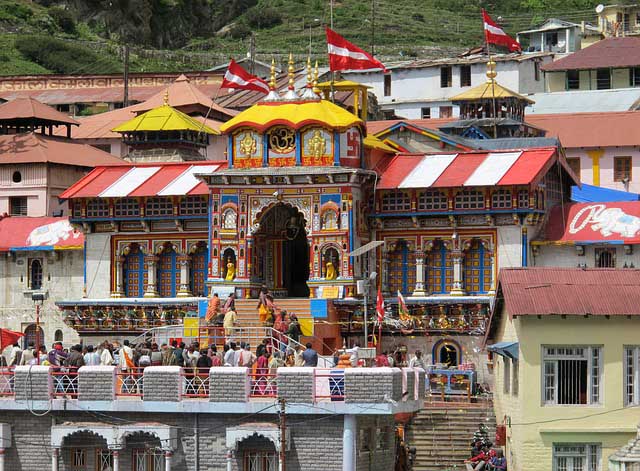
The Badrinath temple is built in the middle of two mountains named Nar and Narayan of the Himalaya Mountains. The area around Badrinath temple was called by different names at different times. In Skanda Purana, this area is called “Muktiprada”. Even in the golden age, this place is called “Muktiprada”.
After this, the name of this area was called “Yoga Siddha” in Tretayuga and as “Vishala Teerth” and “Manibhadra Ashram” in Dwaparayuga. By the time of Kali Yuga, this area came to be known as “Badrikashram” and “Badrinath”.
It is also said that once upon a time there were huge trees named Badri in this area, due to which this area is also known as Badrinath. However, at present, no tree named Badri is found in Badrinath.
Legend of Badrinath
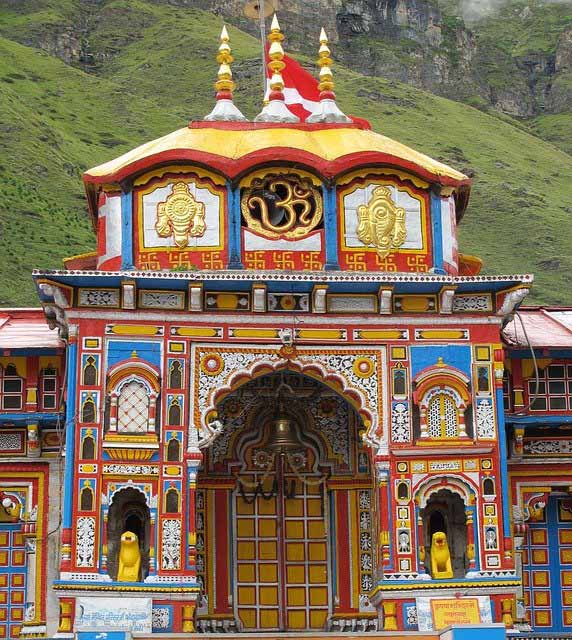
Story – 01
According to the most popular legend behind the naming of the Badrinath temple and its surrounding area – once Narada Muni visits Kshirsagar to have a darshan of Lord Vishnu, he sees Goddess Lakshmi pressing the Lord’s feet there. Narad Muni is very surprised to see Goddess Lakshmi pressing the feet of Lord Vishnu.
To satisfy his curiosity, Narad Muni asks Lord Vishnu about it, then Lord Vishnu, suffering from guilt, goes to the Himalayas to do penance. When Lord Vishnu is doing intense penance in the Himalayas, a lot of snow starts falling at that time. Because of this Lord Vishnu is completely immersed in the snow. Seeing Lord Vishnu in such a condition, Goddess Lakshmi gets upset.
To save Lord Vishnu from the snow, Mata Lakshmi herself takes the form of a tree of Badri and stands near him and starts bearing all the snow rain on herself. Thus Mata Lakshmi takes the form of a tree named Badri and starts austere penance to save Lord Vishnu from the winter, summer and rainy seasons.
After many years, when Lord Vishnu after completing his penance opens his eyes, he sees that Mata Lakshmi is covered with snow. Seeing this harsh penance of Mata Lakshmi, Lord Vishnu says to Mata Lakshmi that “Hey Goddess Lakshmi, you have done the same penance as me, because of this you will also be worshipped with me at this place from today.
Because you have a tree named Badri. Because of my protection, this place will henceforth be known as Badrinath.
Story – 02
According to another legend associated with Badrinath, Badrinath and its surrounding area were once known as Kedarkhand, the land of Lord Shiva. It is said that when the river Ganges descended on this earth, it divided into 12 streams to reduce its velocity.
Out of those 12 streams, the stream which started flowing at this place was known as Alaknanda. At the same time, Lord Vishnu was looking for a suitable place on earth to meditate. Then Lord Vishnu’s eyes fell on this place situated near the banks of river Alaknanda.
And at the same time, this place fell in the mind of Lord Vishnu. At that time Lord Shiva and Mother Parvati used to reside at this place. Because of this Lord Vishnu incarnated as a child and started crying loudly. Hearing a child crying, Mother Parvati comes to silence this child.
At the same time, Lord Vishnu in child form asks Mother Parvati for this place to meditate. Mother Parvati gives this place to the little boy to meditate, to pacify the small child. It is said that since that time this place is known as Badri Vishal.
Story – 03
Vishnu Purana, a major text of Hindu religion, is associated with Badrinath and a mythological story is heard. According to the legend mentioned in Vishnu Purana, Nar and Narayan were the sons of Dharma. Nar and Narayan are considered to be incarnations of Lord Vishnu.
Nara and Narayana, both did rigorous penance for many years at this place to spread the religion. Both Nar and Narayan searched for the establishment of their ashram at places named Vriddha Badri, Yog Badri, Dhyan Badri and Bhavishya Badri. After some time, while searching for a suitable place, Nar and Narayan find a stream of hot and cold water flowing near the river Alaknanda.
Both the brothers established their ashram at this place. It is said that after some time this place came to be known as Badrinath.
According to some other mythology, Ved Vyas Ji wrote the Mahabharata at this place. It is believed that Nar and Narayan were born as Krishna and Arjuna at the time of Mahabharata. According to another legend related to the time of Mahabharata, Pandavas had come to this place and offered Pind Daan to their ancestors.
Even today, pilgrims and residents perform Pind Daan of their ancestors at a place called Bramhakapal near Badrinath.
Description of Badrinath in texts
Badrinath is described in many religious and Vedic texts of Hinduism. Badrinath is mentioned in detail in Mahabharata, Vishnu Purana, Skanda Purana, Padma Purana, Bhagavata Purana and Varaha Purana.
Apart from this, the description of Badrinath is also found in many Vedic texts written from 1750 to 500 BCE. The glory of the Badrinath temple has also been described in the “Nalayar Divya Prabandha Granth” composed by the Alvar saints in the middle of the 7th and 9th centuries.
Saint Periyalvar has dedicated 7 stotras to Badrinath and Thirumangai Alvar has dedicated 13 stotras to this temple. Badrinath Temple is also one of the 108 Divyadesham Temples dedicated to Lord Vishnu.
History of Badrinath
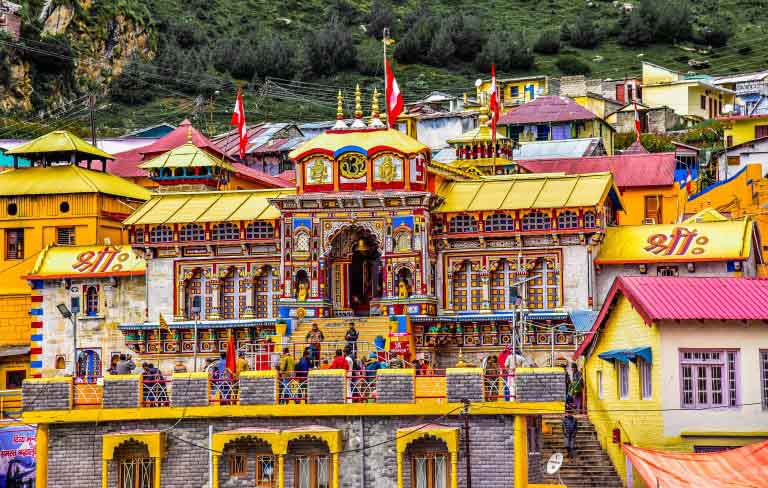
Historians have different opinions regarding the construction of the Badrinath temple. According to some historians and available sources, the Badrinath temple was a Buddhist monastery before the 8th century. Which was later established as a Hindu temple by Hindu religious guru Shankaracharya.
The biggest reason behind the possibility of the Badrinath temple being a Buddhist monastery is considered to be the architecture of this temple. According to historians, the architecture of the temple is identical to that of a Buddhist vihara, due to which this temple appears like an ancient Buddhist temple. According to several other sources, Adi Guru Shankaracharya established this temple in the early years of the 9th century.
It is also believed that Adi Guru Shankaracharya had stayed at this place for six years. During the period of these 06 years, he used to stay in Badrinath for 06 months and Kedarnath for the rest of 06 months. It is believed that the idol of Lord Badrinath was built by the gods themselves.
It is said that the followers of Buddhism threw this idol in Alaknanda. After that Adi Guru Shankaracharya again found the statue of Badrinath and installed it in a cave located near the hot water stream called Tapt Kund. After some time the idol of Lord Badrinath is removed back from this place, which is established for the third time by Ramanujacharya, found from Tapt Kund.
According to the most traditional legend associated with the construction of the Badrinath temple, Adi Guru Shankaracharya, with the help of King Kanak Pal, the ruler of the Paramara dynasty, expelled the Buddhists from this area. King Kanak Pal and his successors took over the entire management of the temple after the Buddhists were driven out of this area.
The expenses of the temple continued to run properly, so the kings of Garhwal formed a group of villages. Within this group, many villages were established on the way of the devotees who came to visit the temple. The income from these villages was used to provide facilities like lodging and food to the devotees.
Over time, the Parmar rulers assumed the name of “Boland Badrinath”. Apart from this, the throne of the Garhwal kingdom at that time came to be known as “Gaddi of Badrinath”. Till this time, whenever the devotees went to see Lord Badrinath, they used to pay homage to the king of Garhwal before starting the yatra.
The practice of paying homage to the king before the yatra continued till the 19th century. The installation of the idol of Lord Badrinath from the cave to the present temple was done by the then Raja of Garhwal in the 16th century. After the completion of the temple construction work, Maharani Ahilyabai of Indore had climbed a golden umbrella in the temple.
During British rule, the Garhwal state was divided into two parts. Its Badrinath temple was taken over by the British. But the temple management committee was still headed by the king of Garhwal. Badrinath temple is a very ancient temple, apart from this, due to all kinds of natural calamities, avalanches and storms keep coming in this area, the main temple has been renovated many times.
The temple was expanded by the Garhwal kings in the 17th century. In 1803, there was a very strong earthquake in the Badrinath temple and its surrounding area, due to which there was a lot of damage to the main temple, after which the then king of Jaipur got the temple rebuilt.
The reconstruction of the temple was going on till 1870. After so many reconstruction works, the Badrinath temple was finally completely built during the First World War. After the completion of the temple construction, a small town was also formed at this place, along with 20 houses that were also built for the staff of the temple.
After that, the construction work in the vicinity of the temple had gained momentum. Due to excessive construction work, in 2006 the then state government declared the Badrinath temple and its surrounding area as a no-construction zone.
Geographical Location of Badrinath Temple
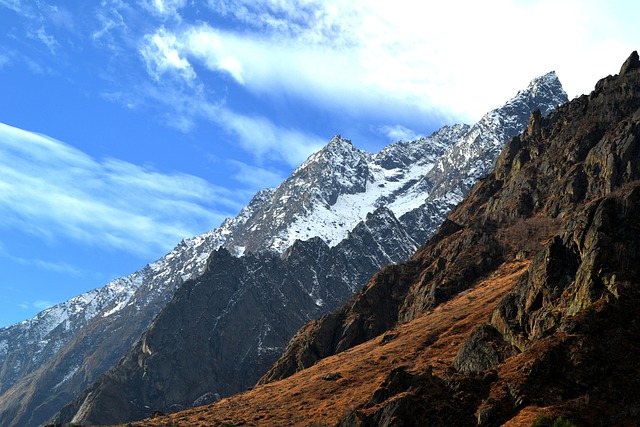
Situated in the middle of the Himalayan high and deep mountain ranges, Badrinath Temple is located in the Chamoli district of Uttarakhand. The small town situated around the temple is also known as Badrinath. .
Mainly this temple comes in the region of Garhwal Himalaya of Uttarakhand. Situated in the valley of the Himalaya Mountains, the Badrinath Temple has an altitude of 3133 meters (10279 ft) above sea level. The Badrinath temple is built on the banks of the Alaknanda river, which further confluences with different rivers to form India’s holiest river, the Ganges.
The Rishiganga river also flows near the Alaknanda river. The confluence of these two rivers takes place near the Nar and Narayan mountain located in front of the temple. There is a place named Tapt Kund just below the temple, which is also the source of hot water at this place.
It is sulfur-containing water that also acts as a medicine. It is a belief among the devotees that one should visit Badrinath only after taking a bath in the Tapt Kund. There are also two small water ponds near the temple known as Surya Kund and Narad Kund.
Architecture of Badrinath Temple
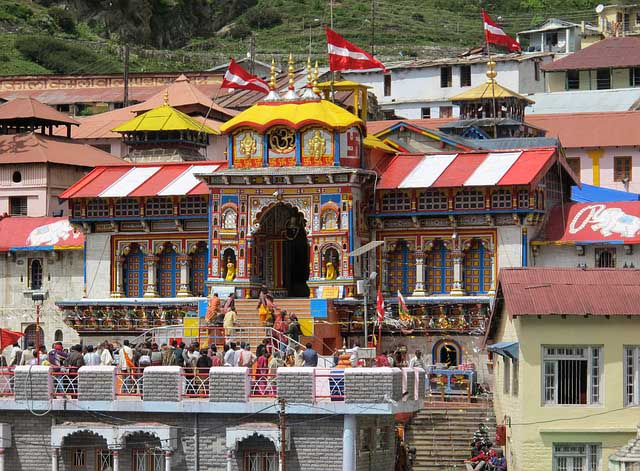
The Badrinath temple is built on the banks of the river and the height of the temple from the river is about 50 meters. The main entrance of the temple opens towards the river. The main temple is divided into three parts: Gribhagriha, Darshan Mandap and Sabha Mandap.
The outer structure of the temple is made of stone and the windows in it are arched. The main entrance to the temple is called the Singh Dwar. The entrance of the temple is arched, on the top of which three golden urns have been installed. On entering the temple through the gate comes the mandapa which is a hall filled with pillars.
Through the pavilion, you proceed towards the sanctum. Very fine and intricate carvings have been done on the pillars made in the mandapa. If you want to get any special pooja and aarti done in the temple, you can get it done in this mandap. In the Sabha Mandap, an arrangement has been made for the Dharmadhikari, Rawal and Vedapathi scholars of the temple.
The roof of the sanctum of the temple is made in a conical shape, which is 15 meters long. The idol of Lord Badrinath installed in the sanctum sanctorum of the temple is 01 meter high which is made of Shaligram stone. The statue of Badrinath is placed in a golden canopy under the Badri tree.
Devotees of Lord Badrinath believe that it is one of the eight self-manifested idols of Lord Vishnu installed in the temple. The statue of Lord Badrinath has a total of four hands – out of which two hands are raised, the first hand is holding a conch and the second hand is a chakra.
Apart from this, the remaining two hands are kept by Lord Badrinath in his lap in the position of Yoga mudra. A diamond is also inlaid on the forehead of Lord Badrinath. Apart from the idol of Lord Badrinath in the sanctum of the Badrinath temple, idols of Nar, Narayan, Kuber, Uddhav, Narada and Kuber are also worshipped.
Apart from all this, idols of Mahalakshmi, Garuda and Navadurga form of Mata Durga have also been installed. Apart from the sanctum sanctorum in the temple premises, idols of Adi Guru Shankaracharya, Vedanta Deshik, Lakshmi-Narasimha, Ramanujacharya, Nar-Narayan and the folk deity Ghantakarna of the Pandukeshwar area have also been installed. All the idols installed in the Badrinath temple are made of Shaligram stone.
Festivals at Badrinath Temple
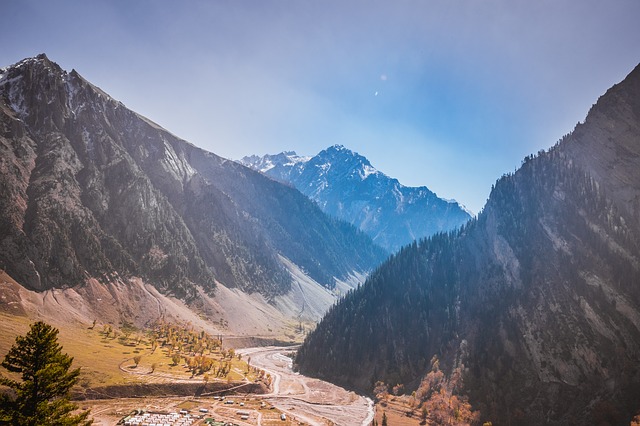
Although all the festivals related to the Hindu religion are celebrated with great pomp in the Badrinath temple, the festival named Mata Murti ka Mela is considered the most important festival of Badrinath.
During this festival, the mother of Lord Badrinath is worshipped, in which residents and devotees participate enthusiastically. Apart from this the 08 day Badri Kedar festival known to be held in June is also celebrated with great enthusiasm.
Badri Kedar festival which lasts for 8 days is celebrated jointly in both Badrinath and Kedarnath temples. At this time, artists from all over the country perform cultural programs in these two temples which are much liked by the devotees and the residents.
Badrinath Temple Aarti Timings
The doors of Badrinath temple open only at 04:30 in the morning. Lord Badrinath Mahabhishek and Abhishek are performed in the aarti performed at this time, along with the recitation of Gitapath and Bhagwat worship.
The darshan of Badrinath Bhagwan opens for devotees around 7-8 in the morning, which remains open only till 01:00 in the afternoon. After this, the doors of the temple remain closed from 01:00 in the afternoon to 04:00 in the evening.
From 04:00 in the evening to 09:00 in the night, the temple remains open for the devotees to visit. Geet Govind and Aarti are recited in the Badrinath temple during the evening hours.
Badrinath temple opening Date in 2022
In the winter season, the doors of the Badrinath temple remain closed for six months for the devotees to visit. During the winter season the festival idol of Lord Badrinath is taken to the Narasimha temple of Joshimath, 40 km from Badrinath. After this, the festival idol of Lord Badrinath is served in the Narasimha temple for the next six months.
After that, during the summer season, the opening of the doors of the temple is announced after seeing the auspicious time at the time of Akshaya Tritiya. In the year 2022, the doors of Badrinath temple will be opened for devotees on 08 May 2022 at 06:15 am.
Badrinath temple Closing Date in 2022
The closure of the doors of Badrinath temple in the winter season is made before or after Bhai Dooj that comes after Diwali (possibly in October and November). On the day when the doors of the Badrinath temple are closed, a lamp filled with a sufficient amount of ghee is lit in the sanctum sanctorum of the temple for six months.
A special aarti is also organized by the temple priests in front of the temple management committee members and pilgrims to light the Akhand Jyot at that time. During the summer season, when the doors of the Badrinath temple are opened again for the devotees, a large number of devotees gather in the temple premises to see the Akhand Jyot.
Badrinath Temple Priest
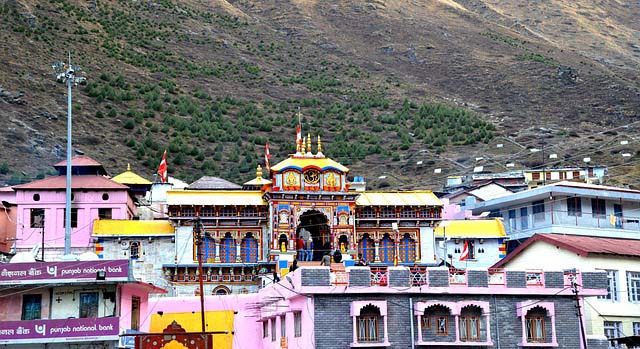
The head priest of the Badrinath temple is a Brahmin from the Namboodiri community of Kerala. It is recorded in the records of the Badrinath temple that the traditional priests of the temple were the ones who did penance to Lord Shiva, at that time all these priests were addressed as Dandi Sanyasi.
When the head priest of the temple died without any successor in 1776 AD, the then king of Garhwal had appointed a non-sannyasi Brahmin from the Namboodiri community living in Kerala as the head priest of the temple.
Hotels in Badrinath

One of the major religious tourist destinations in India, the area around Badrinath and Badrinath city also has many hotels and dharamshalas. If you are travelling to Badrinath with a travel agency, then they book hotels in Badrinath for you in advance.
Apart from this, if you want, you can also book hotels for yourself with the help of online hotel booking websites and apps. Many Dharamshalas are also built-in Badrinath, you will find their phone numbers available on the internet. You can also book a room for yourself by calling Dharamshala before reaching Badrinath.
If you are travelling to Badrinath in the off-season, then you can also book a room for yourself in a hotel or Dharamshala after reaching Badrinath.
Local Food in Badrinath
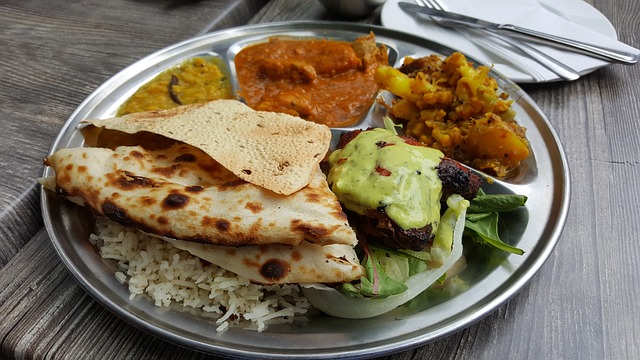
Being a world-famous religious tourist place, there are many eateries and restaurants around Badrinath Temple. In all these eateries, you can enjoy the famous Pahari food of Uttarakhand, North Indian food and South Indian cuisine.
Religious Tourist Places Near Badrinath
Tapt Kund, Charanpaduka, Mata Murti Mandir, Brahma-Kapal and Sheshnetramata Murti Temple, Brahma-Kapal, Neelkanth Shikhar, Veda Vyasa Cave, Pair of Snakes, Vasudhara Waterfall, Satopanth (Swargarohini), Sapta Badri and Sheshnettra.
How To Reach Badrinath

How To Reach Badrinath by Air
The nearest airport to Badrinath is Jolly Grant Airport of Dehradun. The distance from Dehradun airport to Badrinath is only 314 km. Jolly Grant Airport in Dehradun is well connected to all major airports in India. From here you will get taxi and cab service to Badrinath very easily.
How To Reach Badrinath by Train
Rishikesh Railway Station is the nearest railway station to Badrinath. The distance of Badrinath from Rishikesh railway station is just 295 km. Rishikesh is very well connected to the major railway stations of India. You will get bus, taxi and cab services from Rishikesh to Badrinath.
How To Reach Badrinath by Road
Badrinath is very well connected by road to all the major cities of Uttarakhand. There are regular bus, taxi and cab services available to you from cities like Delhi (ISBT Kashmere Gate Bus Station), Haridwar, Rishikesh and Dehradun. If you want, you can easily reach Badrinath in your private vehicle.
(If you have reached here in this article of mine, then there is a small request from you that you must share your suggestions related to this article in the comment box below, and if you see any deficiency or find any wrong information, then definitely tell me. I keep posting travel-related information on my website, if you like the information given by me, then you must subscribe to my website through your email, thank you)

